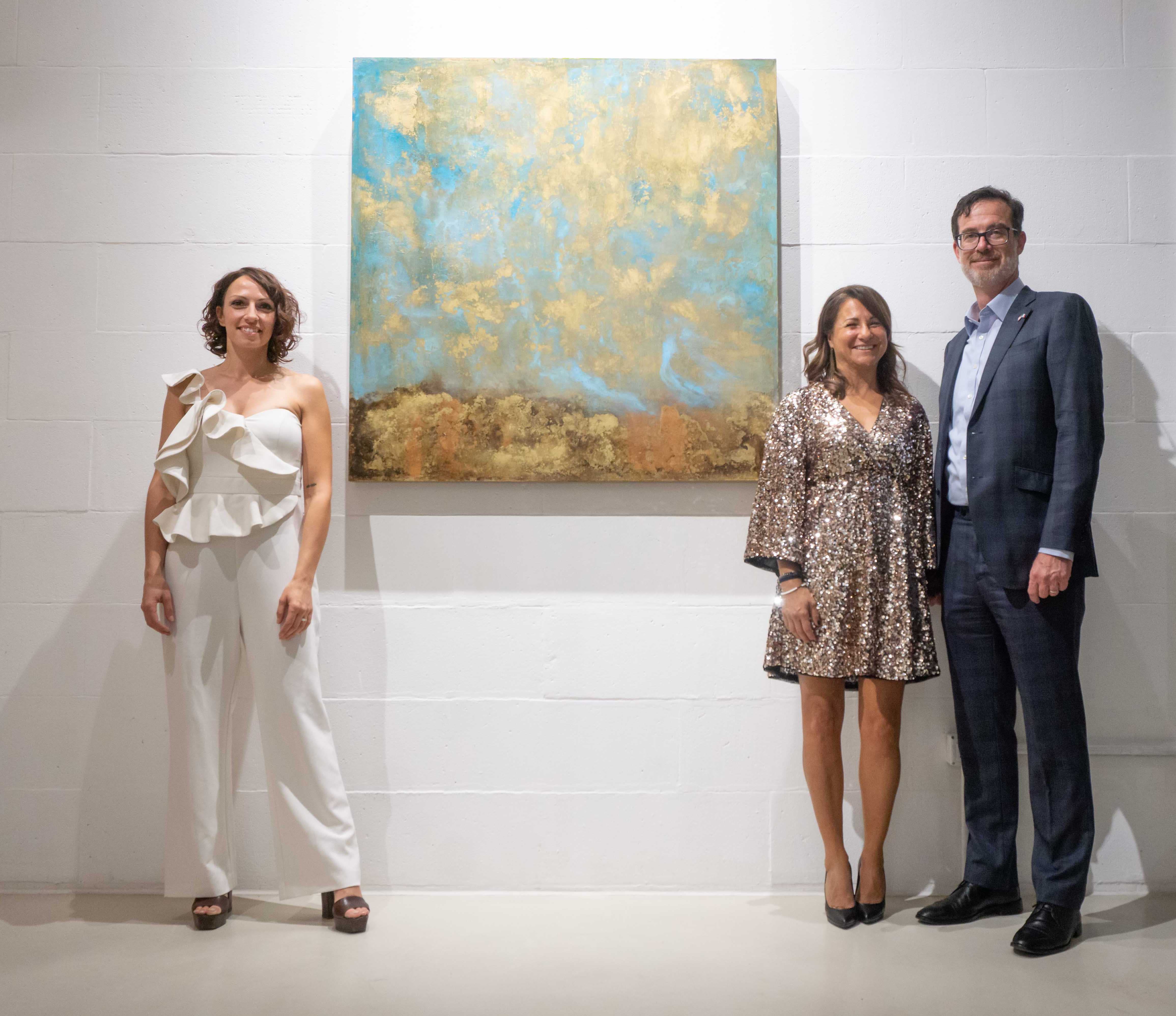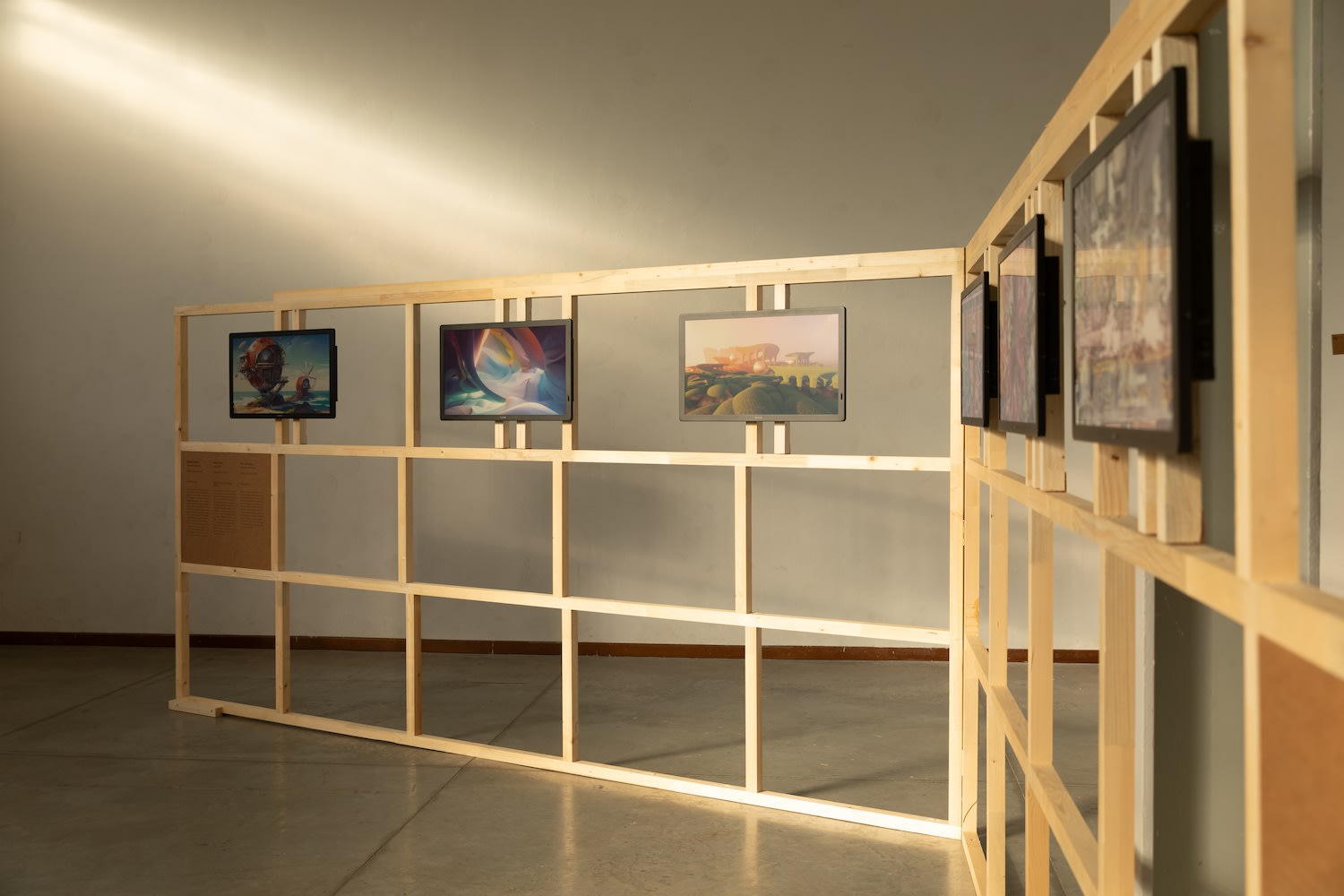Member Case Study: Julia Rajacic
Julia Rajacic is a curator based in Milan who aspires to bring art and sustainability together. A self-proclaimed ‘native sustainable curator’, Rajacic has considered environmental responsibility in her work since the very start of her career.
‘From the beginning, I always had the intention of presenting artists that express the different ways we can connect with the environment,’ she says. ‘But I also wanted to see how I could curate in a coherent and sustainable way.’
In other words, Rajacic saw her role as a curator as two-fold: working with artists engaging with environmental topics, but also encompassing environmental responsibility in her own working practice.
One of Rajacic’s first projects was the exhibition Gaïa, which explored the link between gender and ecology and was organised as part of ArtsCOP21 during the UN’s landmark Paris conference in November 2015.
It was working with other artists and curators during ArtsCOP21 that helped Rajacic go on to develop her own sustainable working practices. The experience also cemented the importance of community for sharing resources and advice.
Eight years on, Rajacic has now developed her own practice and thinks carefully about issues like travel, shipping, energy reduction, material selection, exhibition staging, and catering.
Transport in particular has played a huge role in reducing her own carbon footprint.
‘I have a no flight policy—I avoid all potential projects that require me to fly,’ she says. ‘I prefer to refer the client to a closer colleague curator to collaborate with.’
Rajacic tries to extend this to artists she works with, and has found that this approach can open up new avenues for creative curation.
For Rhapsody in Gold, a recent exhibition with US-based artist Michelle Gagliano, Rajacic found new ways to open a dialogue between the public and the artist without Gagliano flying in specifically for one event. The US consul for culture read a letter from Gagliano at the opening, and visitors were encouraged to leave the artist a message after engaging with the work.

Julia Rajacic, Michelle Gagliano and Anthony Deaton at Rhapsody in Gold. Photo credit: Amogha Skanda
‘Actually I think this was a way to grow the relationship between the artist and the public,’ she says. ‘Often in an exhibition we feel something, but we’re not telling the artist—so that was really interesting.’
Later, when Gagliano was in Europe for other shows, Rajacic organised a public workshop with the artist in Milan.
Reducing travel, particularly flights, has also led to a focus on working with local artists. In 2020, Rajacic founded Jardino, an art consulting agency in Milan that focuses on art and nature and often collaborates with local artists.
‘I really try to extend my network of local artists,’ she says. ‘Because we are in a globalised society, even if you look around your own city, you’re gonna find the world. I’m in Milan, and I can work with artists from every continent. So starting locally is really important to me.’
Meanwhile, thinking about energy reduction has also meant experimenting with ways of using digital technologies in the curation process, including a recent exhibition at Fabbrica del Vapore, MUSE: The energy for tomorrow, which claimed to be the first ‘zero power’ digital exhibition and followed zero-waste and zero-flight policies.

MUSE: The Energy for Tomorrow, exhibition view, Fabbrica del Vapore
Beyond programming, Rajacic also has short-term goals for her own footprint, including carrying out a building energy audit, aiming to only use low- or zero-emissions vehicles for local deliveries by 2025, and aiming for all packing materials to be reusable or curbside recyclable by 2026.
There are several threads that run through all of Rajacic’s work: curating locally; working creatively; and consistently keeping track of her progress and goals.
This has led to consistent reductions in Rajacic’s personal carbon footprint. In 2022, her total carbon footprint was 0.51 tCO2e, down from 0.75 tCO2e the year before.
Beyond reductions, Rajacic has also reflected on the specific role that curators can play in the sector.
‘I think the curator probably has one of the most important roles to play in the fight against the climate crisis in the art world,’ Rajacic says. ‘The curator is an orchestrator of exhibitions and art fairs, so their choices can have a huge impact on the environment—they’re involved at every stage of the process.’
At the same time, curators can have a wide influence within the sector, given how many people they regularly collaborate with.
‘The curator has contact with all the different members of the art world–we’re in daily contact with artists, museums, directors, art fair directors, politicians, art schools, shipping companies, architects, exhibition designers, and so on,’ she says. ‘With those people we often have relations based on trust, because we often collaborate for several years.’
What it comes down to, Rajacic says, is influence. ‘Curators really have a role of influence to play,’ she says. ‘So I think that, today, the curator should be a real environmental ambassador.’
But what does this mean in practice?
‘I think we can do that by setting an example, by adopting a professional sustainable approach, and by taking the lead—by proposing a new way of curating, and inviting sustainable curation throughout the process,’ she says.
This is not without its challenges, and Rajacic is realistic about the progress and setbacks she’s seen over the past eight years in the field.
Major issues include difficulty changing long-held processes, particularly in larger institutions, and finding resources and budgets to commit to change.
Meanwhile, the number of exhibitions focused specifically on environmental topics seems to be growing, which might suggest an increasing awareness and interest in the industry–but this needs to be cemented with concrete action.
‘I think there is a tendency of treating the environmental crisis as a hot topic, and as with every hot topic, it’s treated in a superficial way. We talk a lot about it, but there’s much less action. I would like to see more action,’ Rajacic says.
‘I like to say to artists I’m collaborating with that they don’t need to feel obliged to talk about the environment—the important thing is that they include a sustainable approach within their creative process.’
But Rajacic is optimistic about the overall trajectory of the sector.
‘I really feel more and more openness—artists probably are the most open and most curious to see how they can transform their process,’ she says. ‘And I also see more and more individuals working in the arts sector who really want to change.’
So what advice would Rajacic give to a curator who’s just getting to grips with environmental responsibility?
‘The biggest advice I would say is just to start, even though you don’t have all the available tools. Emerging curators shouldn’t wait to have the perfect conditions—you can start with baby steps,’ she says. ‘And get informed, and get in touch—because there is a growing community that wants to act differently.’
Our Member Case Study series highlights stories from across our sector that show the climate action that’s taking place every day. We’d like to thank our featured members for generously sharing their successes, their challenges, and their plans for the future.
Are you a GCC member and want to share your story? Get in touch! We’d love to hear from you.

